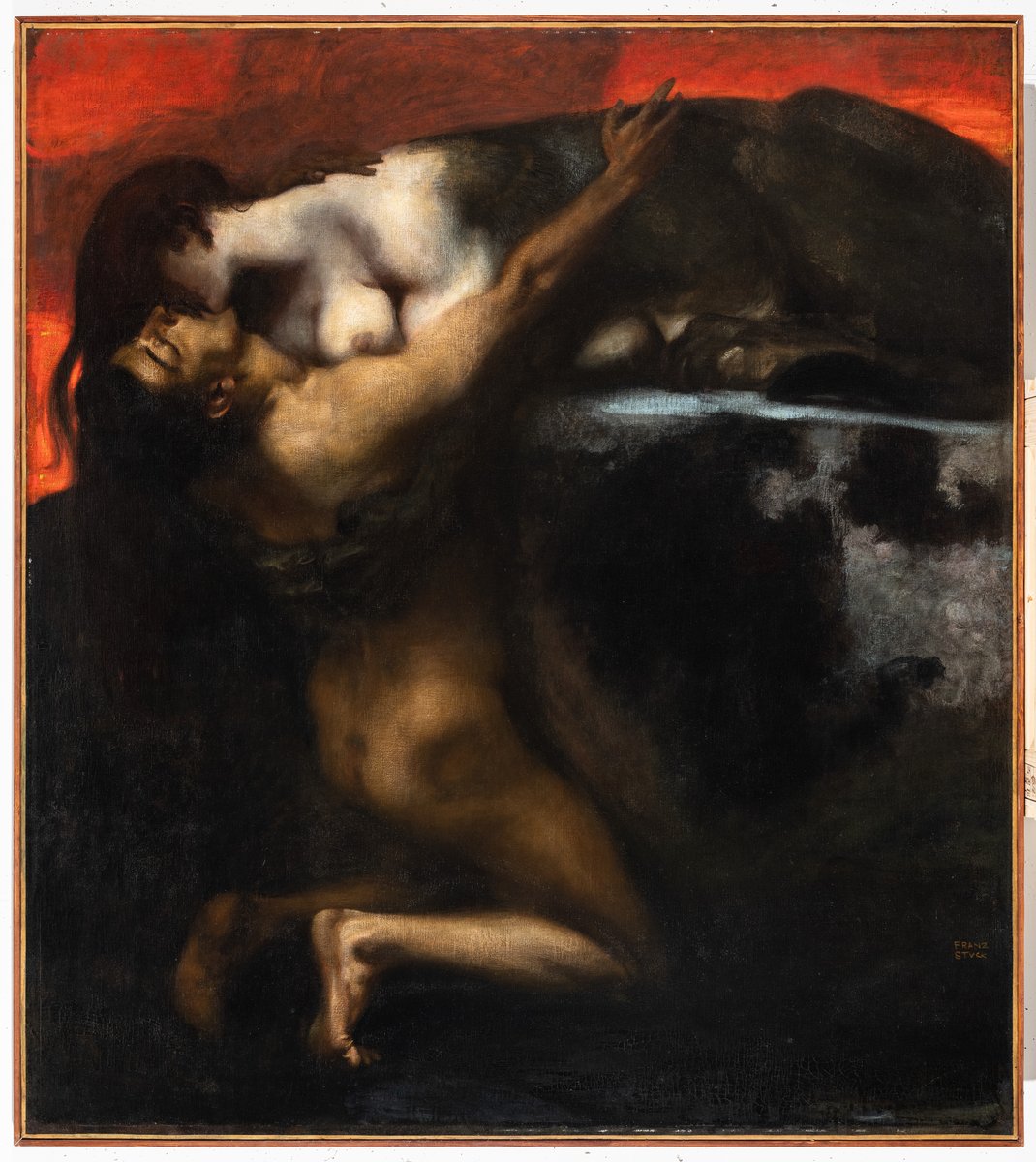
The Kiss of the Sphinx
Department of Art after 1800
The Department of International Art after 1800 holds the international collections of the Museum of Fine Arts – Hungarian National Gallery, from the beginning of the nineteenth century to the present day. This ensemble of around 2,600 works representing many nationalities, periods, and styles, is also very diverse from a technical point of view, and includes paintings, sculptures, works on paper, photographs, new media art, and installations.
Our exhibition offers a selection of the finest pieces in the collection. When deciding which works to display, it was important for us to not only include the most well-known pieces from the last two hundred years, but also to treat our visitors to a few novelties. Our recent acquisitions, newly restored works, and some rarely seen items all showcase the rich variety of our collection, and demonstrate the dynamism in our activities.
The exhibition consists of two distinct chronological units. The nineteenth-century rooms examine the important artistic questions of the period in thematic units. Paintings by some of the greatest masters of French painting can be seen alongside works by Austrian, German, Belgian, and Nordic artists, presenting a complex and nuanced overview of the European art of the period.
The twentieth century and contemporary sections are organised around a variety of trends and artistic problems: some of the most important movements in modern international art (conceptual and figurative tendencies, geometric abstraction) are represented with pieces by major artists. We have also placed particular emphasis on acquisitions made in the last few years, by including works illustrating the main directions in which the collection is expanding.
These two units are completed by an exhibition venue called “Focus”. This will host a variety of temporary dossier exhibitions showcasing various aspects of the collection, as well as thematic issues.
At the centre of Courbet’s life was the struggle for his artistic ideals and his political views. A great master of realist painting, he placed this battle at the focus of Wrestlers. The scene is set in Paris, at the racegrounds behind the Arc de Triomphe. In the foreground is a heated battle between the athletes, yet their forms give a sense of immobility and rigidity. Rather than motion, Courbet places the emphasis on the anatomical detail of strong but strained bodies, highlighting the tense muscles and swollen veins. The stands behind them are occupied by genteel onlookers – but it is strikingly apparent that the contest is for the benefit of the viewer, rather than the barely visible audience.
Among the three paintings by Monet in the Budapest collection, Plum Trees in Blossom is the one that most completely bears the distinctive hallmarks of impressionism. His beloved wife fell ill at the end of a very long and cold winter, but when spring arrived in full flower, Monet was still able to work in relative serenity.
The art of Gauguin became consummate in his years in Tahiti. He sought to express in the language of painting the dignity and harmony these peoples had retained from their ancient way of life and culture. The Black Pigs, which he painted in his first year in Tahiti, captures an exciting moment of stylistic transition. The foliage of the trees and the reed roof of the hut are formed in the Impressionist fashion with iridescent parallel brushstrokes, but these are gradually replaced by more uniform surfaces of colour, and the forms are outlined with strong blue lines. Here, particularly in the case of the animals and the female figures depicted in a state of archaic rest, he used compact, simplified forms. Within the deliberately composed structure the spatial relations of the motifs is governed by formal unity.